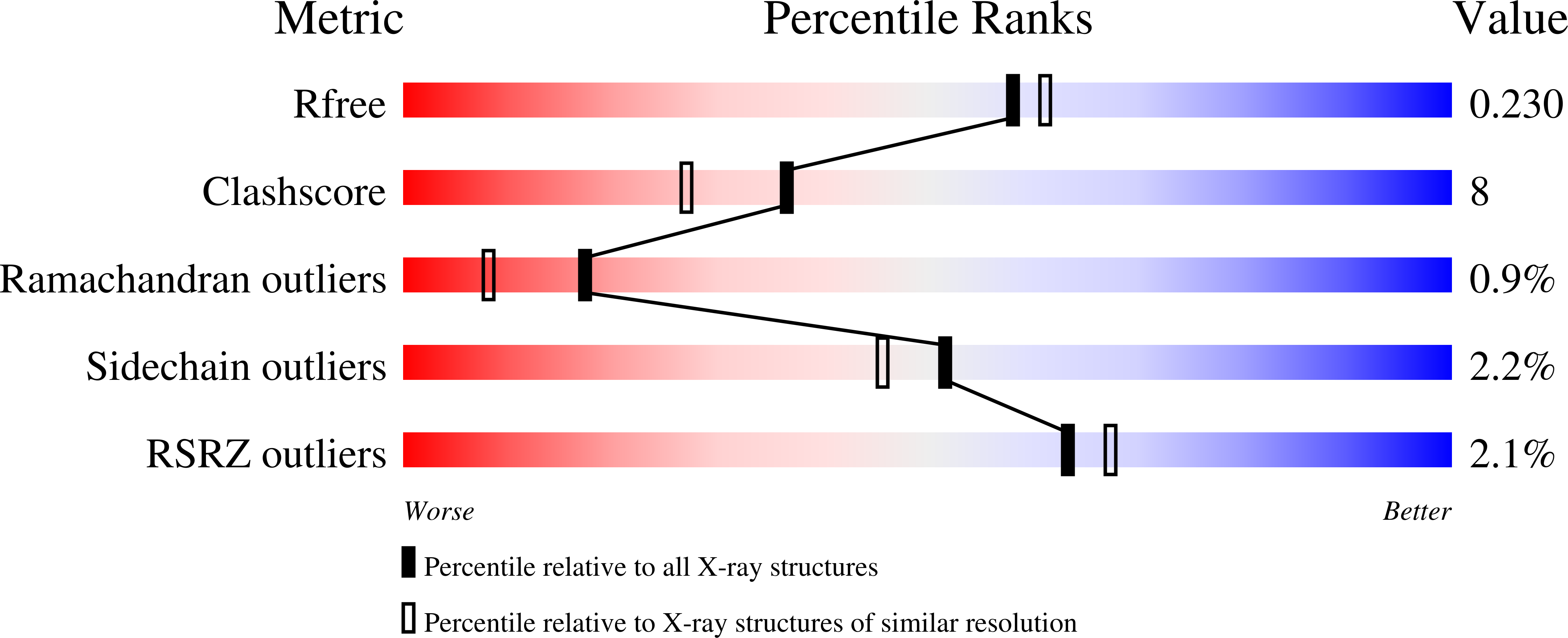THE POSITION OF ARGININE 124 CONTROLS THE RATE OF IRON RELEASE FROM THE N-LOBE OF HUMAN SERUM TRANSFERRIN. A STRUCTURAL STUDY
ADAMS, T.E., MASON, A.B., HE, Q.Y., HALBROOKS, P.J., BRIGGS, S.K., SMITH, V.C., MACGILLIVRAY, R.T., EVERSE, S.J.(2003) J Biol Chem 278: 6027-6033
- PubMed: 12458193
- DOI: https://doi.org/10.1074/jbc.M210349200
- Primary Citation of Related Structures:
1N7W, 1N7X, 1N84 - PubMed Abstract:
Human serum transferrin (hTF) is a bilobal iron-binding and transport protein that carries iron in the blood stream for delivery to cells by a pH-dependent mechanism. Two iron atoms are held tightly in two deep clefts by coordination to four amino acid residues in each cleft (two tyrosines, a histidine, and an aspartic acid) and two oxygen atoms from the "synergistic" carbonate anion. Other residues in the binding pocket, not directly coordinated to iron, also play critical roles in iron uptake and release through hydrogen bonding to the liganding residues. The original crystal structures of the iron-loaded N-lobe of hTF (pH 5.75 and 6.2) revealed that the synergistic carbonate is stabilized by interaction with Arg-124 and that both the arginine and the carbonate adopt two conformations (MacGillivray, R. T. A., Moore, S. A., Chen, J., Anderson, B. F., Baker, H., Luo, Y. G., Bewley, M., Smith, C. A., Murphy, M. E., Wang, Y., Mason, A. B., Woodworth, R. C., Brayer, G. D., and Baker, E. N. (1998) Biochemistry 37, 7919-7928). In the present study, we show that the two conformations are also found for a structure at pH 7.7, indicating that this finding was not strictly a function of pH. We also provide structures for two single point mutants (Y45E and L66W) designed to force Arg-124 to adopt each of the previously observed conformations. The structures of each mutant show that this goal was accomplished, and functional studies confirm the hypothesis that access to the synergistic anion dictates the rate of iron release. These studies highlight the importance of the arginine/carbonate movement in the mechanism of iron release in the N-lobe of hTF. Access to the carbonate via a water channel allows entry of protons and anions, enabling the attack on the iron.
Organizational Affiliation:
Department of Biochemistry, University of Vermont, College of Medicine, Burlington, Vermont 05405, USA.
















